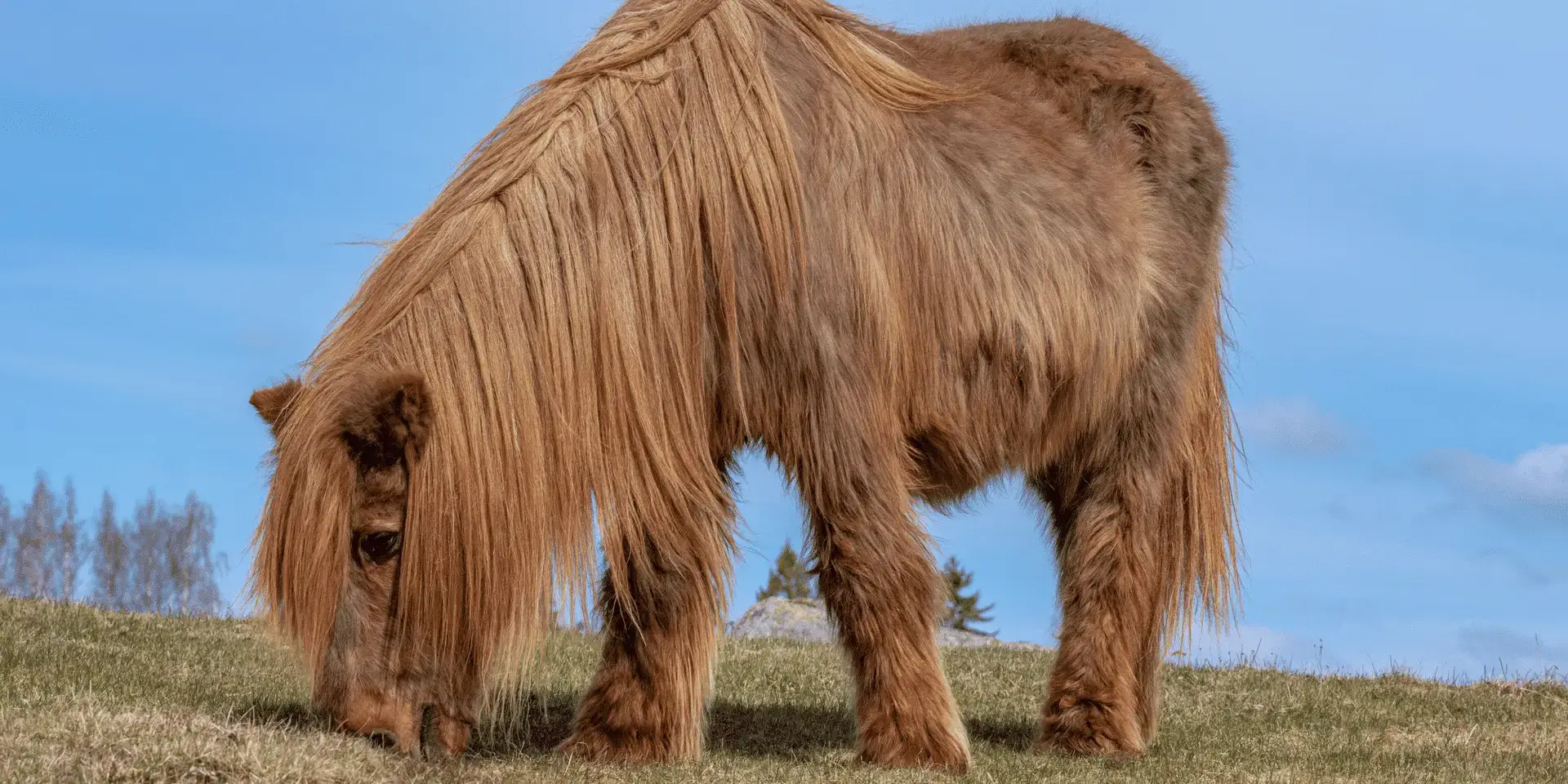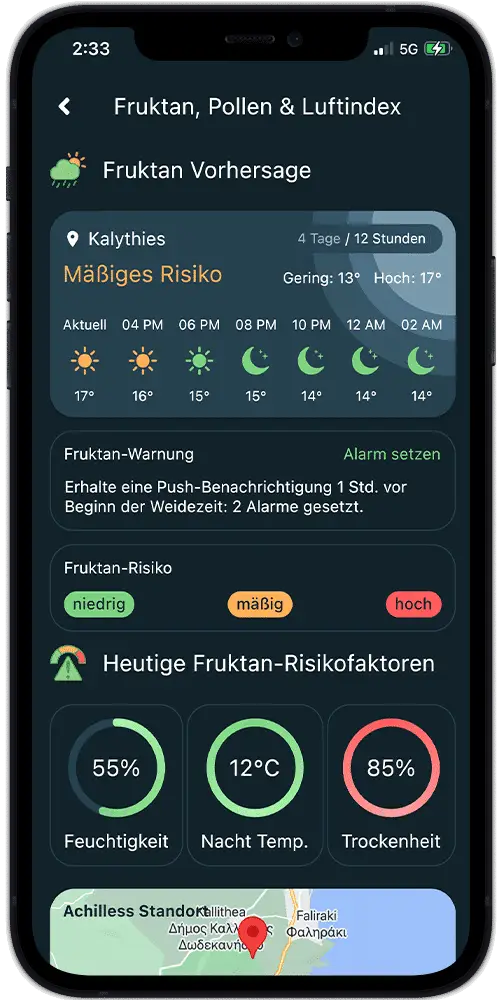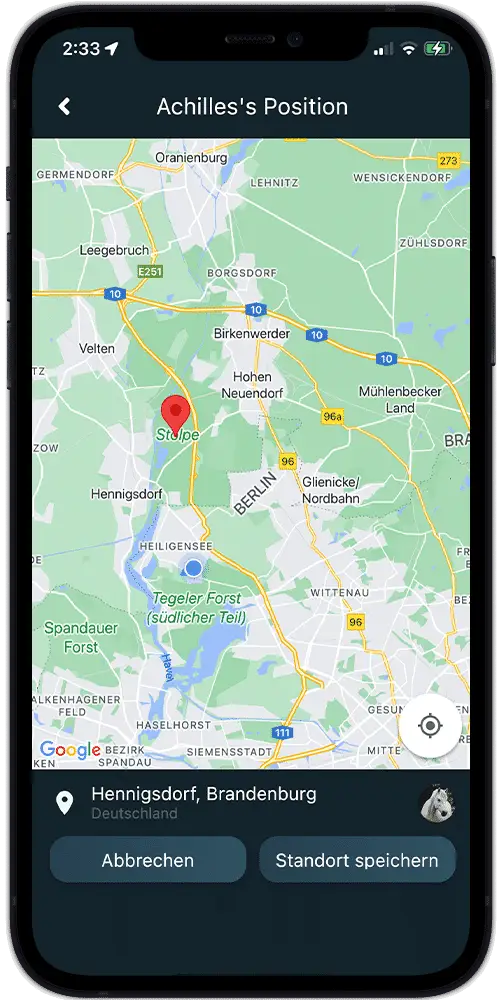
PPID, laminitis and fructan: a dangerous combination for horses
Your horse’s health is paramount, but conditions such as Cushing’s disease (PPID – Pituitary Pars Intermedia Dysfunction) can be a real challenge, especially in older horses. This hormonal disorder is often associated with laminitis and the intake of fructan, a sugar in pasture grass. In this article, you will learn how PPID, fructan and laminitis are linked and how you can use the Happie Horse app to provide your horse with the best possible care.
Table of contents
What is PPID?
PPID is a hormonal disorder in which the pituitary gland produces increased amounts of hormones such as ACTH (adrenocorticotropic hormone). This leads to increased cortisol levels in the blood, which can severely affect your horse’s health.
Typical symptoms of PPID:
- Strong coat growth and delayed coat change
- Muscle loss and emaciation
- Increased thirst and urine output
- Recurrent Laminitis
- Susceptibility to infections and fatty deposits over the eyes
The connection between PPID, laminitis and fructan
Horses with PPID are particularly susceptible to laminitis, especially if they ingest fructan from pasture grass. The high cortisol level in PPID impairs the insulin sensitivity of the cells, which means that sugar – including fructan – is processed more poorly. This can lead to malfermentation in the gut and the release of endotoxins, which cause inflammation in the hoof corium via the bloodstream and ultimately laminitis.
How does the Happie Horse app help with monitoring and prevention?
The digital Cushing’s diary is a particularly valuable feature of the Happie Horse app. This allows you to precisely document the progression of your horse’s disease and keep an eye on important symptoms such as coat changes or weight loss. It gives you the opportunity to monitor the state of health and the effectiveness of treatment measures in a targeted manner.
Advantages of the Cushing’s diary:
- Progress documentation: Record symptoms such as changes in coat growth and signs of laminitis and track your horse’s changes over time.
- Treatment planning: Create individual treatment plans and document veterinary examinations and medication intake.
- Reminders: The app reminds you to administer medication on time and attend regular vet appointments.
The Fructan Risk Management feature - another valuable tool
In addition, the app’s Fructan Risk Management feature helps you to monitor the fructan content in the grass. This allows you to minimize the risk of hoof irritation and respond specifically to your horse’s needs.
How Does Fructan Risk Management Work?
- Input your horse’s data into the Happie Horse App, select the type of grass, and specify the grazing times.
- The app calculates the fructan content based on weather data and sends you a push notification if the laminitis risk increases.
The app provides the following alerts:
- Green: The fructan content is low, low risk.
- Yellow: Moderate risk, increased caution.
- Red: High fructan content, grazing should be restricted.
If the Fructan Risk Management feature is red, you can use the app to restrict grazing and consider alternative feed sources to protect your horse.
Daily grazing time
Note and observe your horse's daily grazing time, and display the past grazing time in a table.
Fructan risk
Check the daily fructan risk at your horse's location and keep an eye on your horse's health. See current fructan risk factors.
Get push notifications
Receive notifications about specific fructan risks based on your selection
Location
You can use the location function to display your current location and the weather, and set different locations for different horses.
Weather forecast
Monitor the weather at your horse 's current location. Choose between a 12-hour and a 4-day forecast.
Past grazing times
Get an overview of past grazing times and fructan risks. Perfect for the grazing or grazing period.
Additional tools in the Happie Horse app
Alongside Fructan Risk Management, the Happie Horse App offers additional helpful features:
- Feeding protocol: Keep track of the feeding and adapt it to the fructan content of the feed.
- Health data: Track important health parameters such as your horse’s pulse and temperature.
- Calendar function: Schedule important vet and farrier appointments to ensure your horse’s health status.
Conclusion: Prevent PPID and laminitis with the Happie Horse app
Horses with PPID have an increased risk of laminitis, especially with high fructan intake. With the Happie Horse app and its Cushing’s diary and Fructan Risk Management feature, you can closely monitor your horse’s health and take preventative measures. Use the app to keep an eye on your horse’s disease progression and protect it from serious consequences!




